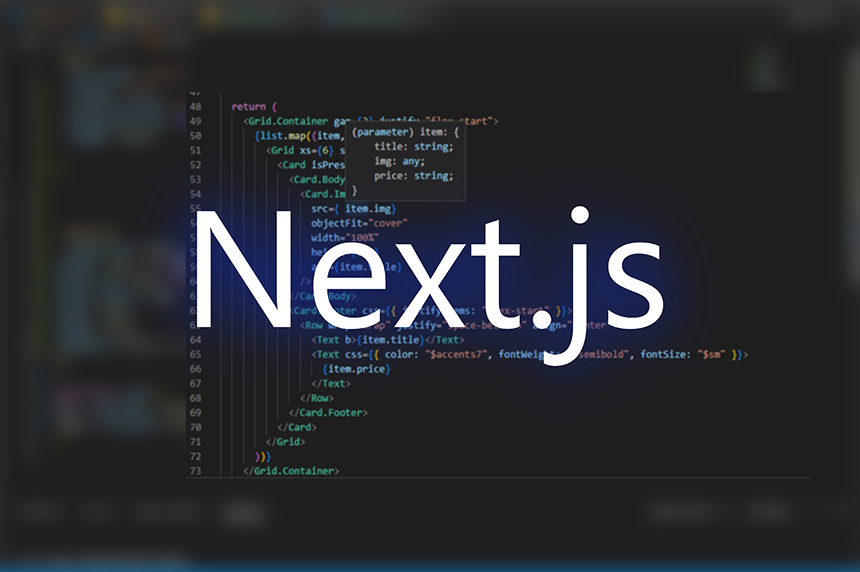The world of web development is constantly evolving, and delivering a seamless user experience is paramount. To achieve this, developers often turn to modern tools and practices. In recent years, Next.js has emerged as a popular framework for building web applications, and combining it with a headless Content Management System (CMS) has become a winning strategy. In this blog post, we'll explore the benefits of developing web apps with Next.js and a headless CMS and how this powerful combination can supercharge your web development projects.
Understanding Next.js
Before we dive into the synergy between Next.js and a headless CMS, let's briefly explore what Next.js is and why it has gained such widespread acclaim in the web development community.
Next.js is a JavaScript framework built on top of React, designed to simplify the process of building modern web applications. Here are some key features that make Next.js stand out:
- Server-Side Rendering (SSR): Next.js offers SSR out of the box, which improves initial page load performance and SEO.
- Routing: The framework provides an intuitive routing system that makes it easy to create dynamic, client-side navigations.
- Static Site Generation (SSG): Next.js allows for the generation of static HTML files at build time, making your web apps incredibly fast and easy to cache.
- API Routes: You can create serverless API routes within your Next.js app, simplifying backend integration and data fetching.
Now, let's explore how combining Next.js with a headless CMS can elevate your web development projects.
The Power of Headless CMS
Traditional CMS solutions often come with limitations when it comes to flexibility, scalability, and the separation of content from presentation. A headless CMS, on the other hand, offers a more modern and flexible approach. Here's why headless CMSs are gaining traction:
- Content Flexibility: Headless CMSs allow you to structure and store content in a flexible and agnostic manner, making it easy to adapt to different front-end technologies.
- API-First: These CMSs provide APIs for content retrieval and manipulation, enabling you to fetch content programmatically and display it seamlessly on any platform or device.
- Decoupled Architecture: Headless CMSs decouple the content management layer from the presentation layer, giving developers the freedom to choose their preferred front-end technologies.
- Scalability: With a headless CMS, you can scale content delivery independently from your application's infrastructure, ensuring high availability and performance.
Now, let's delve into the benefits of using Next.js in conjunction with a headless CMS.
Benefits of Developing with Next.js and a Headless CMS
1. Seamless Content Management
Integrating a headless CMS with Next.js streamlines content management. Content editors can use the CMS's user-friendly interface to create and update content, while developers can fetch and display that content in Next.js. This separation of concerns allows content creators to focus on what they do best, while developers can build a highly performant and responsive front-end.
2. Improved Performance
Next.js, with its SSR and SSG capabilities, provides blazing-fast page load times. When coupled with a headless CMS, you can pre-render pages with dynamic content at build time, resulting in excellent performance and SEO benefits. This combination ensures that your web app loads quickly, regardless of the complexity of the content.
3. Flexibility in Front-End Development
Next.js's flexibility and support for modern JavaScript frameworks allow you to create dynamic and interactive user interfaces. With a headless CMS, you're not limited to specific front-end technologies, giving you the freedom to choose the best tools and libraries for your project. This flexibility is particularly valuable in scenarios where you need to create a unique and customized user experience.
4. Enhanced SEO
Search engine optimization (SEO) is a critical consideration for web applications. Next.js's SSR capabilities enable search engines to crawl and index your content effectively. When combined with a headless CMS, you can optimize content for SEO, such as adding meta tags and structured data, without compromising on the dynamic nature of your web app.
5. Scalability and Performance Optimization
Scalability is a key concern for web apps, especially as user traffic grows. Next.js and a headless CMS work together seamlessly to ensure that your app remains performant even during traffic spikes. You can leverage content delivery networks (CDNs) to cache and distribute content globally, reducing server load and improving response times.
6. Content Reusability
A headless CMS allows you to create and manage content in a modular way. This means that you can reuse content components across different pages and sections of your web app. This not only saves development time but also ensures consistency in your content presentation.
7. Streamlined Development Workflow
Next.js and a headless CMS enhance your development workflow. You can create content templates, define content structures, and collaborate with content creators and developers seamlessly. Content updates and changes can be previewed before publishing, reducing the likelihood of errors in the final version.
8. Future-Proofing
Web technologies evolve rapidly. By decoupling your content management from the presentation layer, you future-proof your web app. You can easily adapt to new front-end technologies and trends without the need for a complete CMS overhaul.
9. Security
Security is paramount in web development. Next.js and headless CMSs both prioritize security. Next.js provides built-in security features, and headless CMSs often offer robust access controls and encryption to protect your content and data.
Popular Headless CMS Options for Next.js
To implement Next.js with a headless CMS, you have several options. Some popular headless CMS platforms include:
CrafterCMS: An open-source headless CMS built for enterprises and includes strong support for large-scale websites, robust security, and developer/content team collaboration via DevContentOps processes.
Strapi: Another open-source headless CMS that offers a flexible content structure and RESTful and GraphQL APIs for content delivery.
Contentful: A cloud-based headless CMS known for its scalability and developer-friendly APIs.
Sanity: A real-time, collaborative headless CMS with a customizable content modeling system.
WordPress (with REST API or GraphQL): Although traditionally not considered headless, WordPress can function as one when you use its REST API or GraphQL endpoints to fetch content in a headless manner.
Conclusion
Developing web apps with Next.js and a headless CMS is a winning combination that offers numerous benefits in terms of performance, flexibility, scalability, and content management. Whether you're building a corporate website, e-commerce platform, or a content-heavy application, this synergy allows you to create dynamic, fast, and user-friendly experiences that can adapt to changing web technologies and user expectations.
By harnessing the power of Next.js for your front-end development and leveraging a headless CMS for content management, you can future-proof your web apps, improve SEO, streamline workflows, and deliver exceptional user experiences that will keep your audience engaged and satisfied. It's a partnership that empowers developers and content creators alike to bring their web projects to new heights.

 Sarah Miller
Sarah Miller




